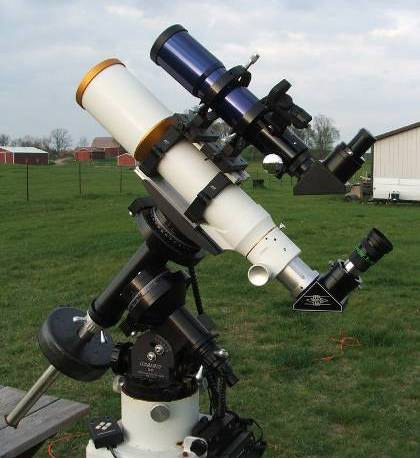

Over the last few years I have written several articles for the newsletter documenting my switch from film astrophotography to DSLR astrophotography. I have been happily working the last few years with a pair of small APO refractors, shooting through one and guiding through another, and I have been getting a fair number of satisfactory photos. I have learned better and more consistent guiding techniques and increased my processing skills as well as upgrading my equipment as necessary.

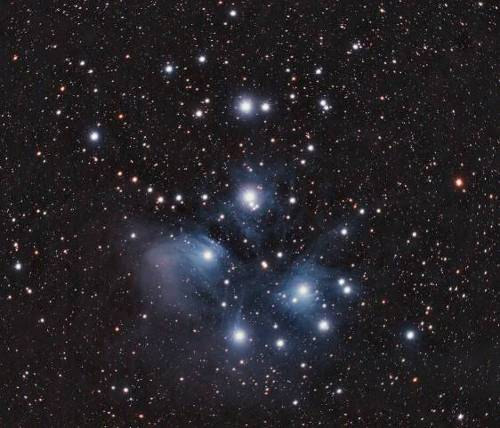
You would think I would be satisfied and just continue to shoot the objects that fit my existing FOV’s.... NAH!!
A year or so ago the infamous “Enabler” (John at Riders Hobbies) had an 8” f5 Newtonian tube assembly that was returned for a slight “ding” on the tube. I am... what is the word... “thrifty”... “frugal”... no... “cheap”—that’s it— “cheap” and I was able to procure that tube at an attractive price. This actually gave me a nice additional focal length to work with. The ZS66 is about 364mm with the flattener, the Megrez 90 is about 500mm and the new 8” Newtonian is right at 1000mm. The tube languished in the barn for a while as I continued to shoot with the refractors. I needed to devise a way to attach the tube to my existing mount. Eventually I banished my laziness and finished up a set of aluminum clamshell rings for the new tube. This allowed me to mount things up this fall in preparation for the upcoming spring galaxy season.
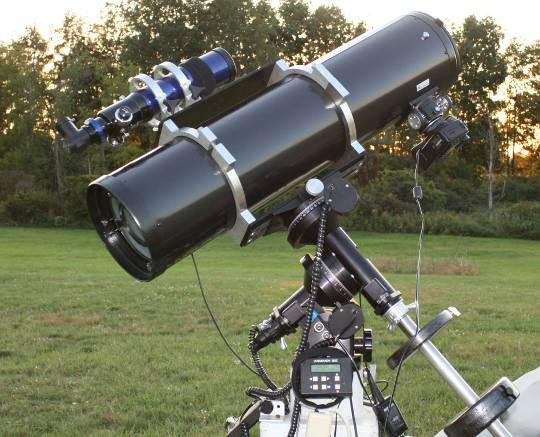
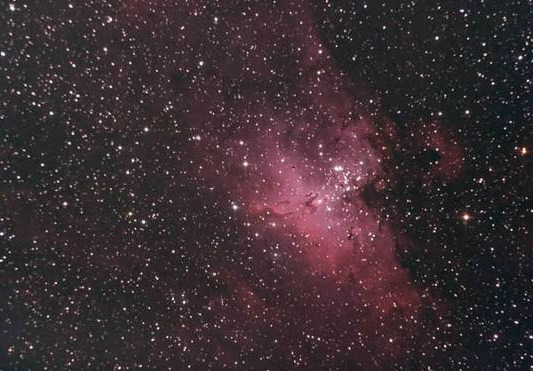
This mates up to the mount fairly well, and I am still using the ZS66 as a guide scope. There several things to improve and I wanted to get them done before I loose the winter sky to clouds. The Newtonian exhibits a fair amount of coma on the APS size camera sensor. This can be reduced by cropping the image but that will not work all the time—I like shooting objects that fill the frame. I also wanted to upgrade the focuser. The Crayford focuser that was supplied with the tube was OK for visual use but somewhat “mushy” in feel for critical astrophoto focusing. The first thing that I changed was the focuser. I added the Orion “low profile” dual speed Crayford focuser and it seems to be a very nice unit (John at Riders was able to order one for me). I am quite satisfied with it. At the same time I completely disassembled the telescope, cleaned and aligned all the optics and added Protostar flocking material to the inside of the tube. Jeff Thrush made me a “secondary dew heater” from resistors and this was attached to the back of the secondary mirror with RTV adhesive. The increase in contrast due to the flocking material was very satisfying!
I researched coma correctors and settled on the Baader MPCC. John at Riders was kind enough to get me one and for the last several weeks I have been good to go. I have been taking astrophotos at every opportunity with this new setup as I work out the bugs and learn how to deal with the increased mass and area on the mount as well as the increased focal length. I have noticed the breeze has a great deal of effect on the scope. The system weight is well within the ability of my G11 mount but the scope has quite a bit of area exposed to the breeze. Fortunately most nights are quite still. I am thinking of some kind of wind break for the pier area. I have been really quite pleased with the system.
As a comparison, the following shots are full frames taken using the ZS66SD and the 8” f5 Newtonian. They are of the same object—IC1396 and VDB-142.
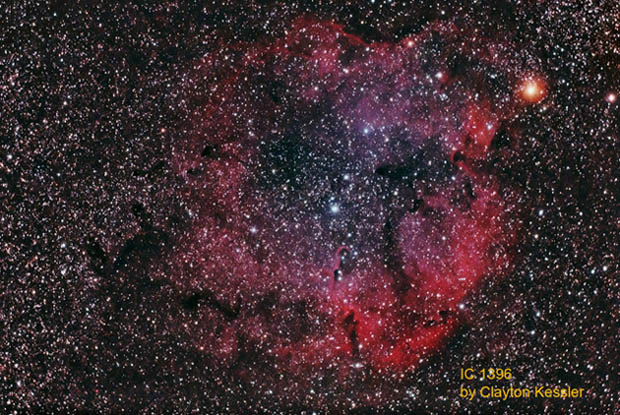
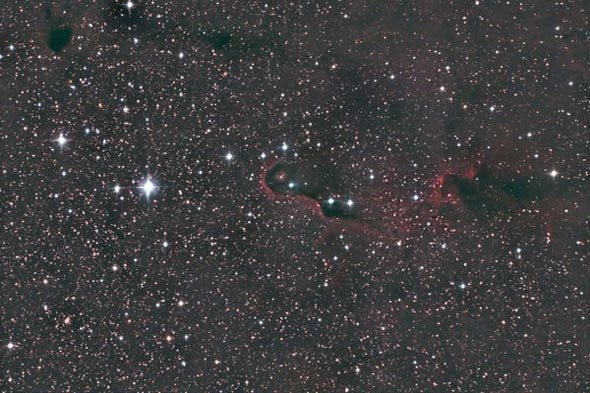
The marked difference in the field of view is very useful to me as an astrophotographer. I can shoot an object at the focal length that best displays it’s features.
A few of my recent astrophotos taken with this setup:
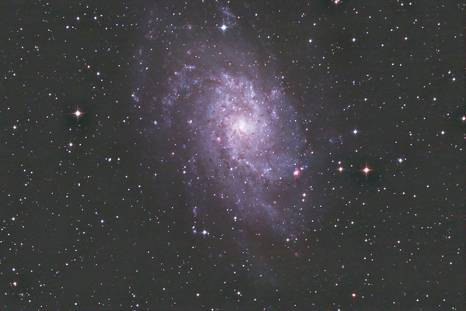
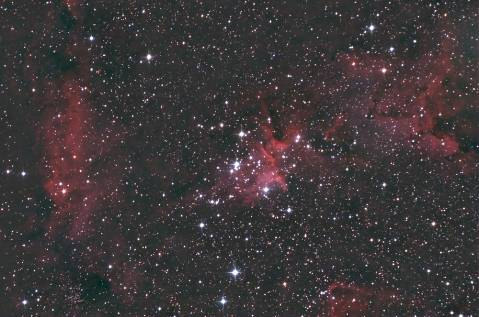
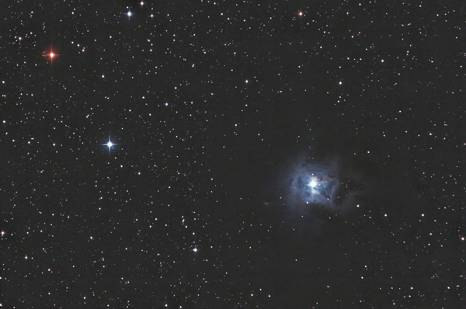
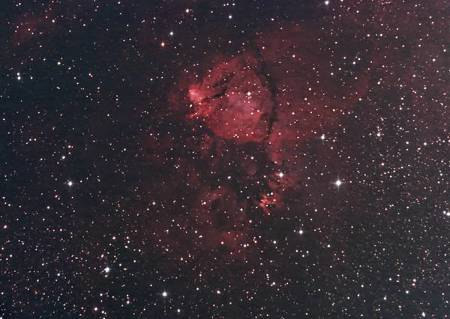
I must say that I am quite happy with how this has worked so far. The increased focal length will let me target objects that were too small for my other instruments and re-visit some objects in search of increased fine detail. In addition, I can start to try lunar photography with a web cam. I anticipate leaving this setup on the mount for at least a year as I explore the possibilities.